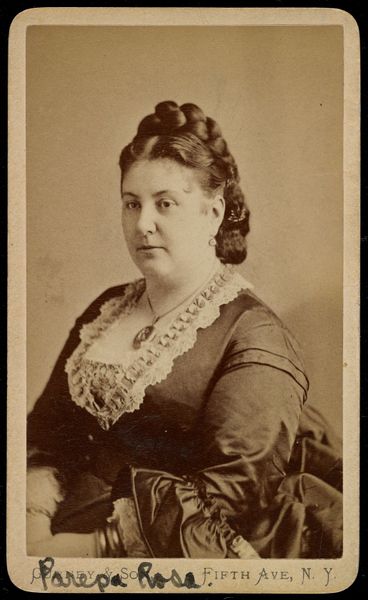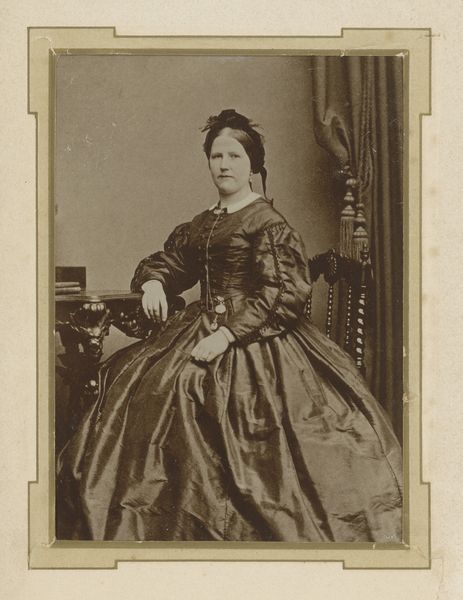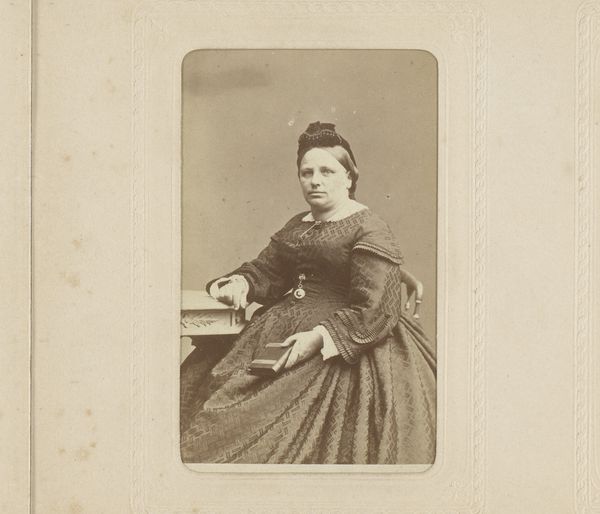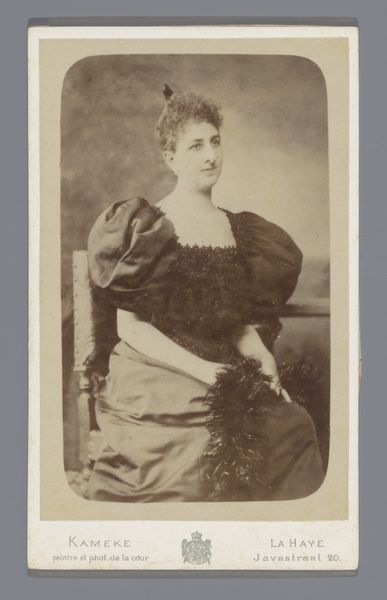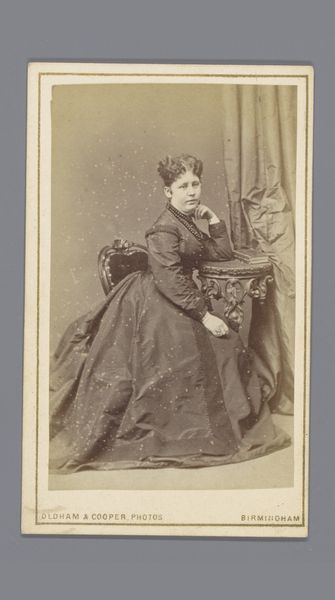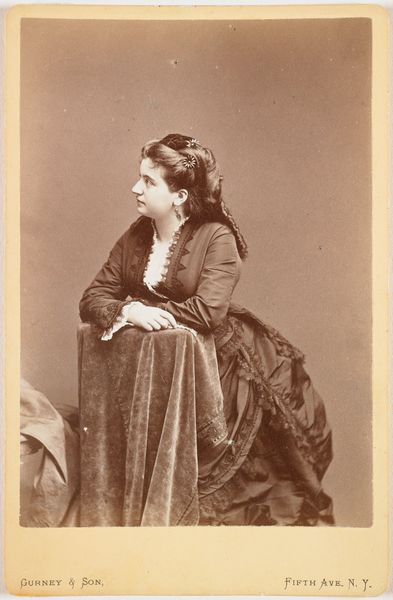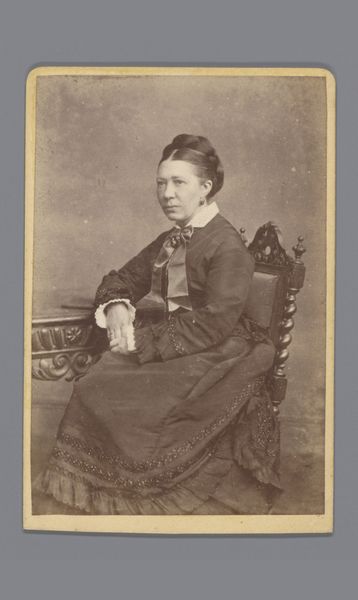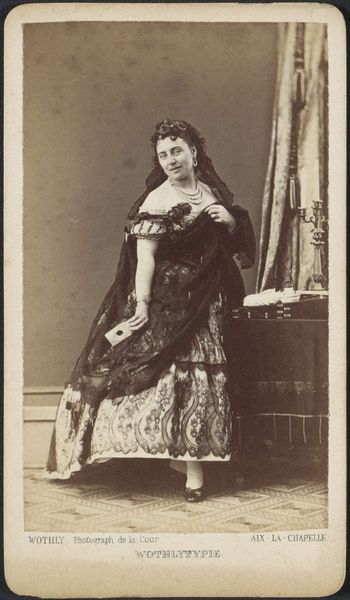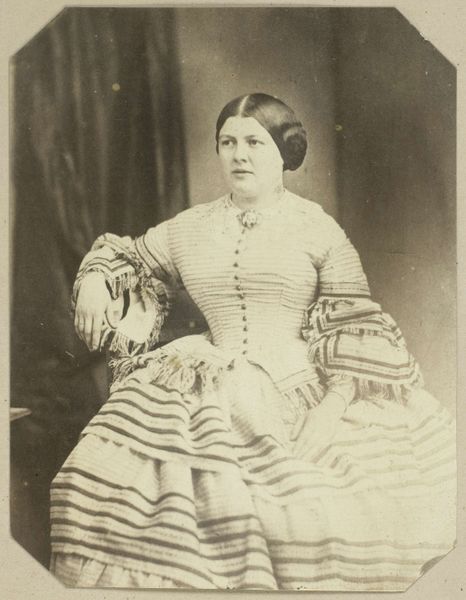![[The British Soprano Euphrosyne Parepa-Rosa (1836-1874)] by Jeremiah Gurney](/_next/image?url=https%3A%2F%2Fd2w8kbdekdi1gv.cloudfront.net%2FeyJidWNrZXQiOiAiYXJ0ZXJhLWltYWdlcy1idWNrZXQiLCAia2V5IjogImFydHdvcmtzL2FkNjkzMGVjLTAwMTEtNDRmYy1iYzIzLTdiMWNhYmE4OTU1YS9hZDY5MzBlYy0wMDExLTQ0ZmMtYmMyMy03YjFjYWJhODk1NWFfZnVsbC5qcGciLCAiZWRpdHMiOiB7InJlc2l6ZSI6IHsid2lkdGgiOiAxOTIwLCAiaGVpZ2h0IjogMTkyMCwgImZpdCI6ICJpbnNpZGUifX19&w=3840&q=75)
[The British Soprano Euphrosyne Parepa-Rosa (1836-1874)] 1870s
0:00
0:00
daguerreotype, photography
#
portrait
#
daguerreotype
#
photography
#
19th century
Dimensions: 13.3 x 8.3 cm (5 1/4 x 3 1/4 in. )
Copyright: Public Domain
Curator: This daguerreotype captures British soprano Euphrosyne Parepa-Rosa in the 1870s, adding another layer to how we appreciate both performance and portraiture during this period. Editor: She looks rather somber. I'm drawn to the rich textures in her dress. The sheen of the fabric and the lace collar… they almost tell their own story of wealth and social status, and I imagine of intense pressure too. Curator: Absolutely. Consider the intense public scrutiny opera singers, especially women, faced. Their voices and personas were constantly under examination, their bodies made spectacles in ways we are only now beginning to fully dissect and address. Editor: Her gaze is steady, direct. She understands the performative nature of her public image. One could argue that photography was yet another stage for Parepa-Rosa. These daguerreotypes contributed to the creation of celebrity culture as it was solidifying. The image could reach further, last longer, than a performance itself. Curator: And don't forget the broader political and economic context. The rapid rise of the middle class created a huge market for portraits like this. People wanted to emulate celebrities and also cement their own position in the social hierarchy through portraiture. Gurney's studio must have been so popular. Editor: I wonder what role Parepa-Rosa herself had in constructing this image. To what extent could she truly shape how she was perceived versus having to bend to the cultural expectations? Curator: It is vital to understand those power dynamics. Women performers were both celebrated and exploited. Their image, their work, became property in a deeply unequal landscape. This piece acts as an access point for critical perspectives. Editor: This single portrait then offers access into wider concerns about celebrity, consumerism and representation during a transformational time. Food for thought, really. Curator: I agree. I see the study of public figures' portraiture as essential to examining the role of class, gender, and race during that time. Thank you.
Comments
No comments
Be the first to comment and join the conversation on the ultimate creative platform.
